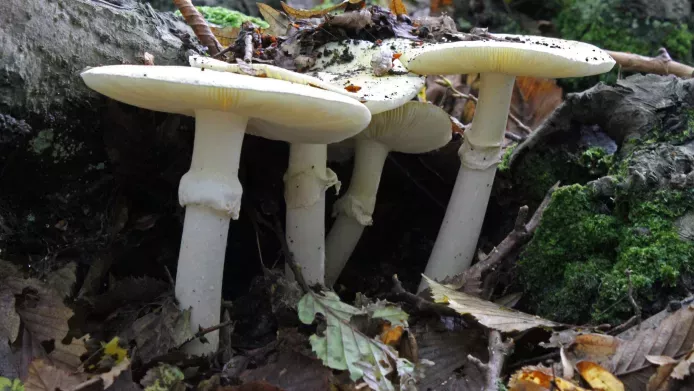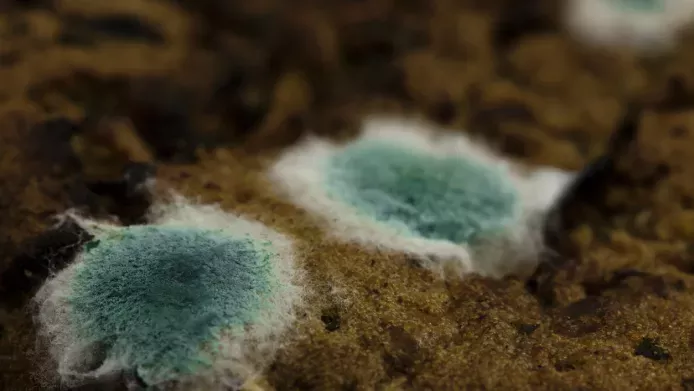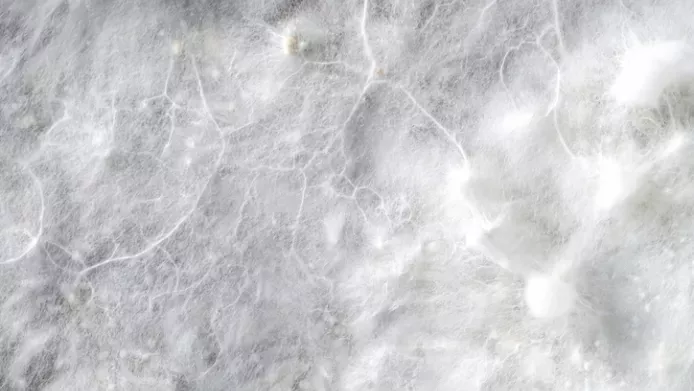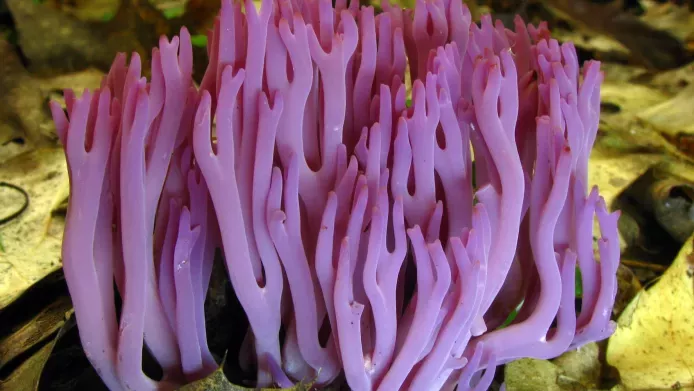Explore our fantastic fungi resources to help you spot, identify and photograph different species in your local area.

Autumn is the perfect time to go fungi hunting, as cool, damp conditions encourage the visible parts of fungi (such as mushrooms) to sprout.
When we think about fungi, we usually think of things we can see above the ground: mushrooms, lichens and moulds.
Mushrooms

Mushrooms are the ‘fruiting body’ of the fungus – they pop up above the ground to release spores, which help the fungus to spread. They can range in size from the tiny fairy inkcap (Coprinellus disseminatus) which grows in clusters, to the giant puffball (Calvatia gigantea) which can reach the size of a football.
One of the most iconic mushrooms to spot in the UK is the fly agaric or fly amanita (Amanita muscaria). This vivid red and white mushroom is straight out of a fairy tale, and is what most people think of when we hear the word ‘toadstool’. As its colours suggest, it is highly toxic!
Lichen

Lichens are more complex – a partnership between a fungus and algae or cyanobacteria. Algae can live by themselves in water, but teaming up with fungi enables them to survive in any environment.
Lichens are often found growing on the bark of trees, leaves, rocks, soil and even man-made surfaces. Some look leafy or bushy while others are flat and crusty, and they can be all sorts of colours, from dull grey and brown to a bright green, yellow or orange.
Lichens can be very sensitive to pollution, making them a natural indicator of air quality.
Mould and mildew

Mould and mildew are microscopic species of fungi. We’ve probably all seen mould growing in our homes at one time or another – usually signalling that we need to throw out some old food – but there are in fact thousands of different species of moulds which all have preferences for places to grow.
Both mould and mildew thrive in damp conditions, so poorly ventilated houses in winter are often at risk of developing them. Mildew also often affects plants in the form of white powdery spots on leaves.
Moulds and mildews may not be welcome in your home, as they can cause health problems, but these tiny fungi keep our natural world in balance by rotting and recycling dead matter.
Mycelium

The below-ground part of the fungus is called the mycelium. It’s a network of branching threads called ‘hyphae’ which can stretch for miles, absorbing nutrients from the soil around it. They can also help trees to suck up water and nutrients from the soil, keeping the trees healthy. A symbiotic (mutually beneficial) relationship between a fungus and tree roots is called a ‘mycorrhiza’.
Fungi are hugely important to UK biodiversity and wildlife habitats, working in partnership with plants, helping to break down dead wood and providing vital food and medicine.
Read more about why fungi matter.
Fungi Quest: Go on a fungi-spotting journey

There are many different types of fungi. The visible parts that you might see include moulds, mildews, lichens and mushrooms.
During autumn, when you’re out and about in the countryside, your local park or green space, there are plenty of interesting fungi to be found if you know where to look.
Look up
Can you spot:
- lichens on the branch of a tree or high on a stone wall?
- a bracket fungus which looks like a shelf, bursting from the side of a living tree?
- white, powdery mildews, or orange rust fungi on the leaves of brambles climbing up a fence?
Look down
Can you spot:
- a fairy ring of mushrooms in short grass?
- mushrooms popping up in woodchip on a flower bed?
- mushrooms bursting through tarmac or cracks between paving slabs?
Look around
Can you spot:
- lichens covering a wooden bench?
- mushrooms sprouting from a long-forgotten log pile?
- mould on apples fallen at the base of a tree?
Once you learn to take notice of your surroundings, you could spot lichens, moulds and fungi in any season. After a spell of heavy rainfall, who knows what might pop up from the soil!
Use our 'How to' guide to help you take great photos of the fungi you find.
Warning
Never pick or eat mushrooms while out spotting. Most are inedible and some are extremely poisonous. Even experts can’t always identify them correctly.